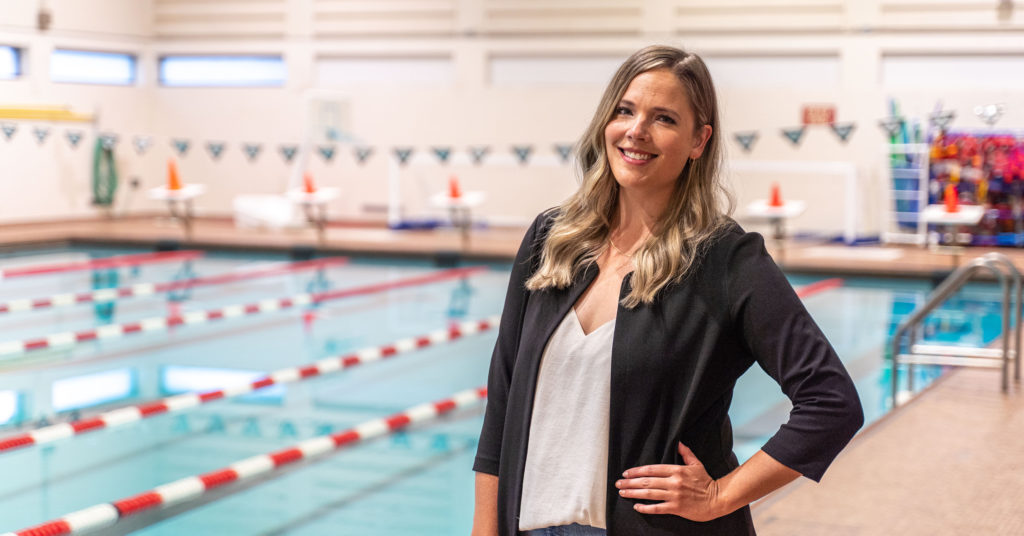
“Water safety was always an important part of my life. I worked as a lifeguard in high school and during my undergrad degree at Western University. Shortly after that I started working for the Lifesaving Society in Ontario – which is where I first got into the field of drowning research.
While working at the Lifesaving Society, I realized there is a huge drowning burden that people weren't really talking about at the time. There was a lot of opportunity for impact in drowning prevention, both in Canada and globally, so, I decided to pursue my PhD in drowning prevention.
In my role as a health scientist in the Division of Injury Prevention at the US Centers for Disease Control and Prevention (CDC), I’ve had the opportunity to collaborate with partners on global drowning research projects. Over ninety percent of the burden of drowning is in low and middle income countries, and rates are particularly high in sub-Saharan Africa. Recently we worked with local partners to conduct a large-scale drowning prevention project to describe the burden and characteristics of drowning in Uganda, and we are now partnering to conduct a similar survey in Ghana.
Due to limitations with existing data systems, there is little information on the true burden of drowning in sub-Saharan Africa, and what the most common causes of drowning are. Sometimes what we uncover is surprising. The Uganda study identified that young adult males, particularly those engaged in fishing or other occupational activities on the water, were at the highest risk of drowning in the country. This is quite different than what we see globally, where young children are typically at the highest risk of drowning.
It is critical to conduct studies like these to understand the regional differences in the circumstances of drowning among the highest risk groups, so that the type of prevention strategies that are implemented will be applicable to the burden in that region. We’re working to improve data around drowning and support the implementation and evaluation of proven drowning prevention strategies globally.
An even more neglected area of drowning prevention is non-fatal drowning – which occurs when someone who starts drowning is rescued or survives. In my role with the Drowning Prevention Research Centre Canada I worked with Canadian and global experts to define and create a categorization system for non-fatal drowning, which can have severe long term consequences, such as brain damage or other disabilities. Better understanding, describing, and preventing non-fatal drowning is a key focus of my work, and was part of my dissertation at York University.
I want people to know that drowning is a major public health concern – it is the third leading cause of unintentional injury death globally. Over 235,000 unintentional drowning deaths are estimated to occur each year, but the burden is likely much higher because not all drowning cases are reported or recorded, and some are captured with other causes of death.
I also want people to know that drowning is preventable. People often think of drowning as an unfortunate accident, that nothing could have been done to prevent it – but that simply isn’t true. All drowning is preventable and there are proven prevention strategies – like always wearing a life jacket while boating, teaching all children basic swimming and water safety skills, and fencing backyard pools with four-sided isolation fencing – these are simple actions that could save so many lives.
In 2014, the World Health Organization released a first ever global report on drowning and that garnered a lot of attention and funding for drowning prevention worldwide. I’m pleased to say that as attention increases around the issue and more funds are allocated to implement proven interventions, drowning fatalities are decreasing overall. However, there is still more work to be done to reduce inequities in drowning and eliminate this preventable public health problem.”
Dr. Tessa Clemens is a passionate drowning prevention researcher focused on improving drowning surveillance and identifying effective strategies for preventing drowning. Her work focuses on supporting health equity, which includes understanding and addressing racial and ethnic disparities in drowning rates and supporting the implementation of effective interventions among underserved populations with the highest rates of drowning. Dr. Clemens received a PhD in kinesiology and health science from York University, where her research explored the epidemiology and prevention of drowning in Canada and the reporting and classification of drowning worldwide.
